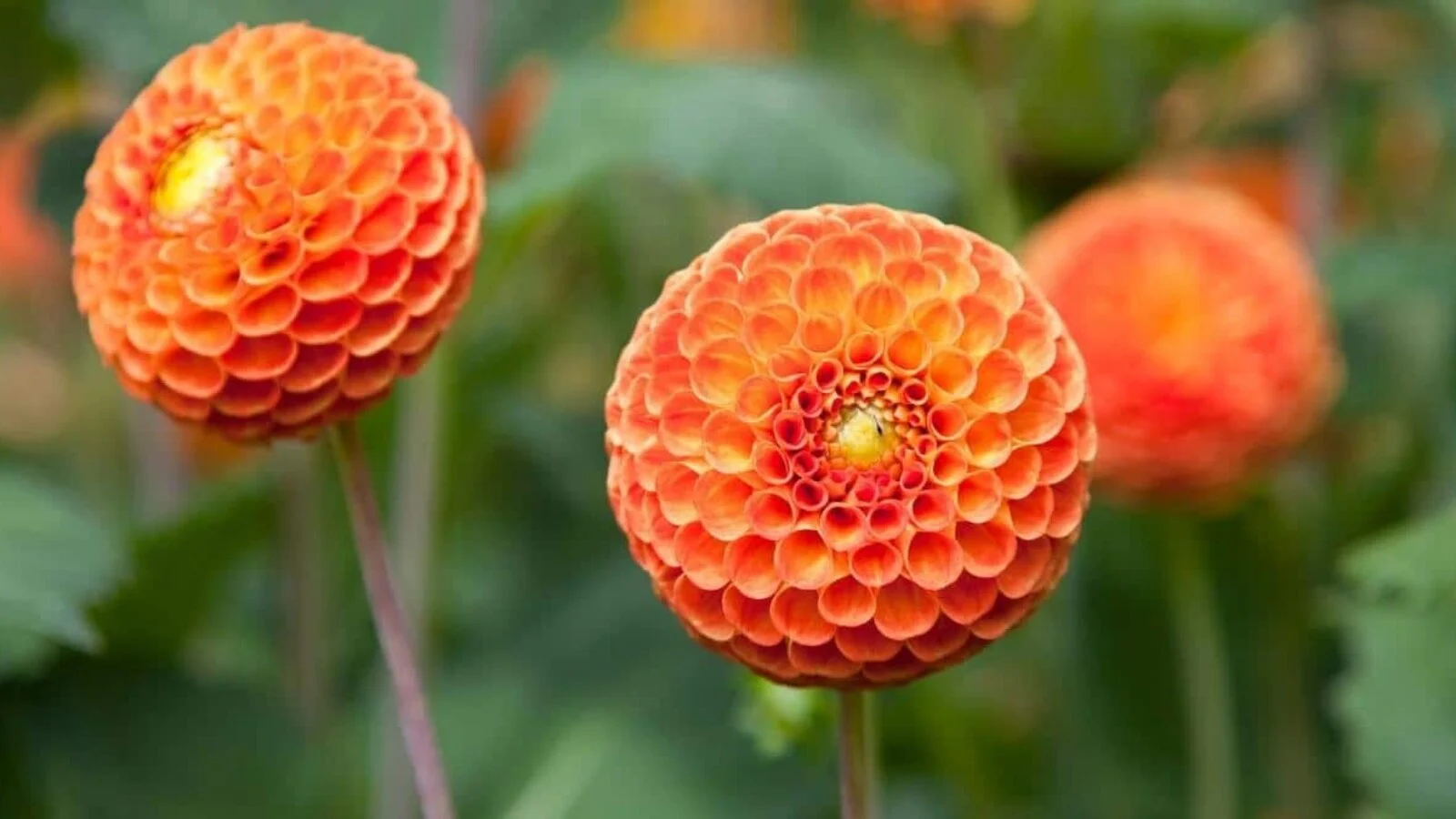Aloe vera is a well-known succulent plant valued for its medicinal properties and ornamental appeal. Its thick, fleshy leaves and rosette growth pattern make it a popular choice for indoor and outdoor gardens. However, several other plants share a similar appearance and can easily be mistaken for aloe vera. In this article, we will explore these aloe look-alikes, their characteristics, growing conditions, care requirements, and potential uses. We will also provide a comprehensive FAQ section to address common questions regarding these plants.
Contents
Common Plants That Resemble Aloe Vera
Several plants can be mistaken for aloe vera due to their similar leaf shape, texture, and growth habit. Here are some of the most notable examples:
1. Agave (Agave spp.)
Agave is a genus of succulent plants that are often confused with aloe due to their similar appearance.
- Description: Agave plants typically have thick, fleshy leaves that are arranged in a rosette pattern. The leaves can be green, blue-green, or variegated and often have sharp, spiny tips.
- Growing Conditions: Agave prefers well-drained soil and full sun exposure. It is drought-tolerant and thrives in hot, dry climates.
- Care Requirements: Water agave sparingly, allowing the soil to dry out between waterings. Fertilizing once or twice during the growing season with a balanced fertilizer can promote healthy growth.
2. Haworthia (Haworthia spp.)
Haworthia is a genus of small, stemless succulents that are native to South Africa and are often mistaken for aloe due to their rosette shape and leaf structure.
- Description: Haworthia leaves are typically green or white-green and have a smooth, glossy texture. Some varieties have white stripes or tubercles on the leaves.
- Growing Conditions: Haworthia prefers well-drained soil and bright, indirect light. It can tolerate lower light conditions but may grow more slowly.
- Care Requirements: Water haworthia sparingly, allowing the soil to dry out between waterings. Fertilizing every few months during the growing season can enhance growth.
3. Gasteria (Gasteria spp.)
Gasteria is another genus of succulent plants that can be confused with aloe due to their thick, fleshy leaves and rosette growth habit.
- Description: Gasteria leaves are typically green or gray-green and have a rough, bumpy texture. The leaves are arranged in a rosette pattern and may have soft spines along the edges.
- Growing Conditions: Gasteria prefers well-drained soil and partial shade. It can tolerate a range of light conditions but thrives in bright, indirect light.
- Care Requirements: Water gasteria sparingly, allowing the soil to dry out between waterings. Fertilizing every few months during the growing season can promote healthy growth.
4. Aloe Polyphylla (Spiral Aloe)
Aloe polyphylla, commonly known as spiral aloe, is a unique species of aloe that features a distinctive spiral growth pattern.
- Description: The leaves of Aloe polyphylla are thick and fleshy, arranged in a spiral formation. The leaves are typically green with a slight reddish tint on the edges.
- Growing Conditions: This plant prefers well-drained soil and full sun exposure. It is drought-tolerant and thrives in hot, dry climates.
- Care Requirements: Water sparingly, allowing the soil to dry out between waterings. Fertilizing once or twice during the growing season can promote healthy growth.
5. Aloe Ferox (Cape Aloe)
Aloe ferox, commonly known as Cape aloe, is another species of aloe that can be mistaken for aloe vera.
- Description: Aloe ferox has thick, fleshy leaves that are typically green with a reddish tint. The leaves are serrated along the edges and can grow quite large.
- Growing Conditions: Cape aloe prefers well-drained soil and full sun exposure. It is drought-tolerant and thrives in hot, dry climates.
- Care Requirements: Water sparingly, allowing the soil to dry out between waterings. Fertilizing once or twice during the growing season can promote healthy growth.
Table: Comparison of Aloe Vera Look-Alikes
| Plant Name | Scientific Name | Leaf Color | Leaf Texture | Sun Requirements | Water Needs |
|---|---|---|---|---|---|
| Aloe Vera | Aloe barbadensis miller | Green | Fleshy | Full sun | Low |
| Agave | Agave spp. | Green, blue-green | Thick, rigid | Full sun | Low |
| Haworthia | Haworthia spp. | Green, white-green | Smooth, glossy | Bright, indirect light | Low |
| Gasteria | Gasteria spp. | Green, gray-green | Rough, bumpy | Partial shade | Low |
| Aloe Polyphylla | Aloe polyphylla | Green | Fleshy | Full sun | Low |
| Aloe Ferox | Aloe ferox | Green, reddish | Thick, serrated | Full sun | Low |
Growing and Caring for Aloe Vera Look-Alikes
1. Soil Requirements
Most of these plants prefer well-drained soil. It’s essential to amend heavy clay soils with organic matter to improve drainage. A cactus or succulent potting mix is often ideal for these plants.
2. Watering Practices
Aloe vera look-alikes are generally drought-tolerant and should be watered sparingly. Allow the soil to dry out completely between waterings to prevent root rot. Watering frequency may vary depending on the season and environmental conditions.
3. Fertilization
Applying a balanced fertilizer during the growing season can promote healthy growth. A diluted, slow-release fertilizer is often sufficient. Fertilizing once or twice during the growing season is typically adequate.
4. Light Requirements
Most aloe look-alikes prefer full sun or bright, indirect light. However, some species, like Haworthia and Gasteria, can tolerate lower light conditions. It’s important to monitor the plants for signs of light stress, such as etiolation (stretching) or leaf burn.
5. Pest and Disease Management
Common pests that may affect these plants include aphids, mealybugs, and spider mites. Regular monitoring and the use of organic pesticides can help manage infestations. Additionally, ensuring good air circulation around the plants can reduce the risk of fungal diseases.
Common Uses of Aloe Vera Look-Alikes
Plants that resemble aloe vera can be used in various settings, including:
- Gardens: These plants add visual interest and texture to flower beds and borders.
- Containers: Many aloe look-alikes thrive in containers, making them ideal for patios and balconies.
- Indoor Plants: Some varieties, like Haworthia and Gasteria, are popular houseplants due to their attractive foliage and low light requirements.
- Medicinal Uses: While not all aloe look-alikes have the same medicinal properties as aloe vera, some may have beneficial uses in traditional medicine.
Conclusion
Several plants can be mistaken for aloe vera due to their similar appearance and succulent nature. Agave, Haworthia, Gasteria, Aloe polyphylla, and Aloe ferox are just a few examples of these striking plants. By understanding their characteristics and care requirements, gardeners can successfully cultivate these aloe look-alikes and enjoy their beauty in gardens and homes.
FAQ Section
- What plants look like aloe vera?
- Common plants that resemble aloe vera include Agave, Haworthia, Gasteria, Aloe polyphylla, and Aloe ferox.
- How do I care for aloe vera look-alikes?
- Most of these plants prefer well-drained soil, full sun or bright indirect light, and should be watered sparingly.
- Can I grow these plants indoors?
- Yes, many aloe look-alikes, such as Haworthia and Gasteria, are suitable for indoor cultivation.
- Do aloe look-alikes have medicinal properties?
- While some may have beneficial uses, they do not possess the same medicinal properties as aloe vera.
- How often should I water my aloe look-alike plants?
- Water sparingly, allowing the soil to dry out completely between waterings.
- What type of soil is best for aloe look-alikes?
- A well-drained cactus or succulent potting mix is ideal for these plants.
- Are there any pests that commonly affect aloe look-alikes?
- Yes, common pests include aphids, mealybugs, and spider mites.
- Can I propagate aloe look-alikes?
- Yes, many of these plants can be propagated through offsets, leaf cuttings, or seeds, depending on the species.
For more detailed information on aloe vera and its relatives, you can visit the Wikipedia page on Aloe.By following these care guidelines and understanding the unique characteristics of each plant, gardeners can successfully cultivate these aloe look-alikes and enjoy their striking appearance in their collections.










